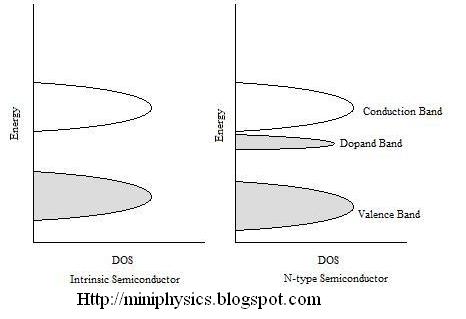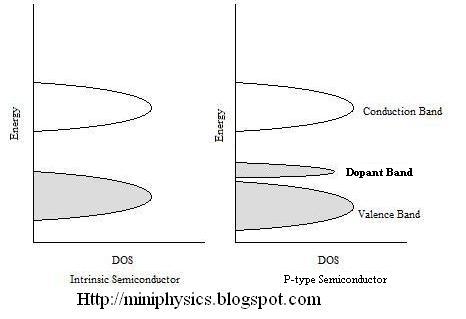An intrinsic semiconductor is a pure semiconductor crystal containing only one element or one compound.
- equal numbers of conduction electrons and holes
- number of electron-hole pairs available for electrical conduction is relatively small to allow for substantial current flow.
Extrinsic semiconductors are doped semiconductors.
- By adding impurities (dopants), the conductivity of the semiconductor is greatly increased.
The process of doping a semiconductor serves to increase the conductivity of the semiconductor through the addition of impurities.
Extrinsic semiconductors doped with donor impurities are called n-type semiconductors because they donate an excess of negative charge carriers.
- Donors are impurity atoms like arsenic, phosphorus or antimony (Group V) with five valence electrons.
Example: When phosphorous atoms(donors) replace some of the silicon atoms, only four electrons are used to bond each P atom into the lattice. The extra electron is nearly free of its parent atom and can be modelled as being in the dopant band(refer to diagram above), just below the conduction band. At room temperature, this extra electron is thermally excited into the conduction band.
Extrinsic semiconductors doped with acceptor impurities are called p-type semiconductors because they donate an excess of positive charge carriers.
- Acceptors are impurity atoms with three valence electrons such as boron and aluminium (Group III)
Example: When a boron atom(acceptor) replaces a silicon atom in the lattice, its three valence electrons form covalent bonds with neighbouring silicon atoms, leaving an electron deficiency, a hole and can be modelled as being in the dopant band, just above the valence band. This hole can carry current in the presence of an electric field.
Simulation for doping: http://phet.colorado.edu/en/simulation/semiconductor
If you are looking for fermi levels/more advanced explanation for this topic, please go to the H3 section of this blog.

